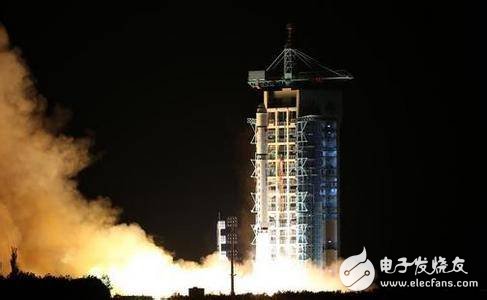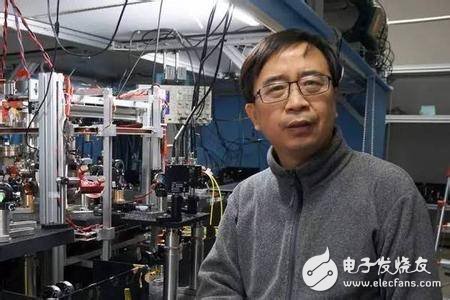At 1:40 on August 16, China successfully launched the world's first quantum science experimental satellite "Mozi" with the Long March II carrier rocket at the Jiuquan Satellite Launch Center. In the next two years of on-orbit operation, the "Mozi No." will cooperate with five ground stations to conduct experimental research on long-distance quantum communication between space and ground for the first time, in order to establish an extremely secure global communication. The foundation of the network will be carried out, and the spatial scale experimental test of the basic problems of quantum mechanics will be carried out to deepen the understanding of quantum mechanics itself.

Quantum Science Experimental Satellite "Mozi" was successfully launched
The name "Mozi" is the best definition of this "world's first" satellite. "Mozi is currently the first scientist in the literature to verify that light travels in a straight line through scientific experiments. In a sense, he is also the first person to propose Newton's first law." Quantum Satellite Chief Scientist, Academician of the Chinese Academy of Sciences Pan Jianwei, a professor at the University of Science and Technology of China, said.
At the same time, questions about quantum communication are also coming. Pan Jianwei said that he welcomes serious doubts based on scientific experiments. At the same time, he said that although China's quantum communication is currently at the forefront of the world, there is still a long way to go in quantum technology such as quantum computing, quantum simulation and quantum precision measurement. "In the face of fierce international competition in quantum technology, We still need very hard work."
Interviewing guest Pan Jianwei: Chief Scientist of Quantum Satellite, Academician of Chinese Academy of Sciences, Professor of University of Science and Technology of China

Academician Pan Jianwei
Development process: Every difficulty makes people almost desperate
In an exclusive interview with Nature, Pan Jianwei said that the primary task of quantum satellites is to establish quantum key distribution between satellites and Beijing ground stations, satellites and Vienna ground stations. The satellite distributes the quantum key to two sites, and ultimately establishes an absolutely secure quantum key through comparison. Two stations with the same quantum key can transmit the information encrypted by the quantum key through classical communication methods such as the Internet and wireless telephone without worrying about the leakage of information. The key transmitted by the quantum satellite can be made one time and one secret. . During the four years from satellite development to launch, Pan Jianwei's team encountered numerous difficulties, each of which was a hurdle, which could lead to satellite launch failure.
Phoenix Information: What is the basic principle of quantum communication?
Pan Jianwei: There are two basic principles of quantum communication: one is that the single photon of the quantum media is inseparable, and the other is that the unknown photon state is not replicable. First, our physical world consists of many basic elemental particles. When the sun comes in, the light is made up of small particles called photons. Photons are the smallest unit of light and are indivisible. Second, photons have a characteristic when they propagate in a vacuum—polarization. It will vibrate in both horizontal and vertical directions. The vibration states of the two photons are represented by 0 and 1, respectively, assuming that 0 is the horizontal vibration and 1 is the vertical vibration. According to the principle of quantum mechanics, the state of the photon is in the superposition state of 0 and 1 when it has not been observed, and it is not known to be 0 or 1. If you try to observe it, it will interfere with it, and the photon state will be destroyed, so this vibration dynamics cannot be accurately copied.
Phoenix Information: What is the purpose of launching a quantum science experimental satellite?
Pan Jianwei: The launch of the quantum science experimental satellite has three main purposes. The first purpose is to make quantum communication between the satellite and the ground. The second is to enable long-distance entanglement photon distribution through satellites to test quantum entanglement and at a long distance. The non-locality of quantum mechanical predictions is tested between locations. Quantum entanglement is a typical phenomenon in the quantum world. A pair of particles in a quantum entangled state, even if they are far apart, when one state changes, the other state will change immediately. This is quantum non-locality. One of the manifestations; the third is to make long-distance transmission of quantum information, the academic language is called quantum teleportation. The reason why we want to do quantum communication between satellite and ground is that although we use fiber optic Internet access now, 99% of the signals are lost after the quantum communication signal is transmitted in the optical fiber for 100 kilometers, then if you want to do A thousand kilometers of quantum communication, even if it is used in all the world's top technologies, can transmit a signal every three hundred years, quantum communication is worthless. However, after the day, quantum satellites can transmit hundreds of K keys, greatly increasing the number of key distributions for quantum secure communication.
Phoenix Information: What preliminary work did you do before launching quantum satellites?
Pan Jianwei: The quantum science experimental satellite has come to this day, but it is actually a very interesting story. In fact, the first quantum key distribution experiment was implemented in free space, which was about 32 cm. In the 1990s, American scientists distributed quantum keys to 100 meters and 200 meters. But the problem with quantum communication in free space is that there are many obstacles on the ground, and the light will encounter obstacles. Once blocked, will it not be transmitted? So later everyone focused on quantum communication in the fiber.
In 2000, everyone's demonstration in optical fiber could be tens of kilometers, and the loss would occur after a long distance. Quantum communication with a distance of 100 kilometers could not be done. At this time, everyone began to think about how to achieve long-distance quantum communication. Around 2002, domestic scholars and some foreign scholars began to do some experiments to test the possibility of long-distance quantum communication. In 2004, we proved through experiments that photons can survive well after breaking through the atmosphere. In 2005, we published a paper. In 2006, we proposed to the Chinese Academy of Sciences that we should be a quantum science experimental satellite. In 2007, the Academy of Sciences gave a fund to carry out key technical research and related research on the ground. We cooperated with the Shanghai Institute of Technical Physics of the Chinese Academy of Sciences, the Shanghai Microsatellite Engineering Center of the Chinese Academy of Sciences and the Institute of Optoelectronic Technology of the Chinese Academy of Sciences to conduct ground research. After several years of research, the team proved the feasibility of the sky through many experiments, so by the end of 2011, the Chinese Academy of Sciences officially supported the project of supporting the quantum science experimental satellite. In June 2016, we developed the satellite in nearly four and a half years.
Phoenix Information: What technical problems have you encountered during the development of satellites to launch?
Pan Jianwei: There were too many desperate things in the middle, and after many hardships and bumps, I was able to launch successfully. For example, in the way of signaling the sky, we have a variety of designs, one is to send the sky to the ground, the other is to send the ground to the sky, and the other is to send from the ground to the sky, make a mirror on the satellite, put the state Change it and send it back to the ground. Finally, we prove that it is most convenient to send from the sky to the ground, but there are many complicated calculations and arguments in the middle.
After the detector was placed in the sky, it was discovered that it was bombed by cosmic rays and died in a week. But we need the machine to work for two years, and we need to solve how to increase the life of the detector to a level of one to two years of work.
In addition, the optical communication requirements are very high. When the satellite is flying fast, it must ensure that the ground optical antenna can follow the rhythm of the satellite to achieve accurate signal reception. For example, on a plane at 10,000 meters, you can see that there is a piggy bank on the ground. Now you can cast coins from the plane. You must ensure that every coin can be thrown into the piggy bank. This technology development is very difficult. Secondly, the light signal emitted by the satellite is very weak, and we must solve the problem of accepting weak light.
Solar PV systems have to increase the supplied voltage,by typically 4 volts,to be able to push the generated energy around your property and if not used back onto the state national grid.
The increase in voltage and losses in wiring circuits can cause inverters to prematurely shut down on over voltage setting.
Solar Plus,Solar Panel Plus,PV Voltage Optimiser,Solar Voltage Optimiser
Jinan Xinyuhua Energy Technology Co.,Ltd , https://www.xyhenergy.com
